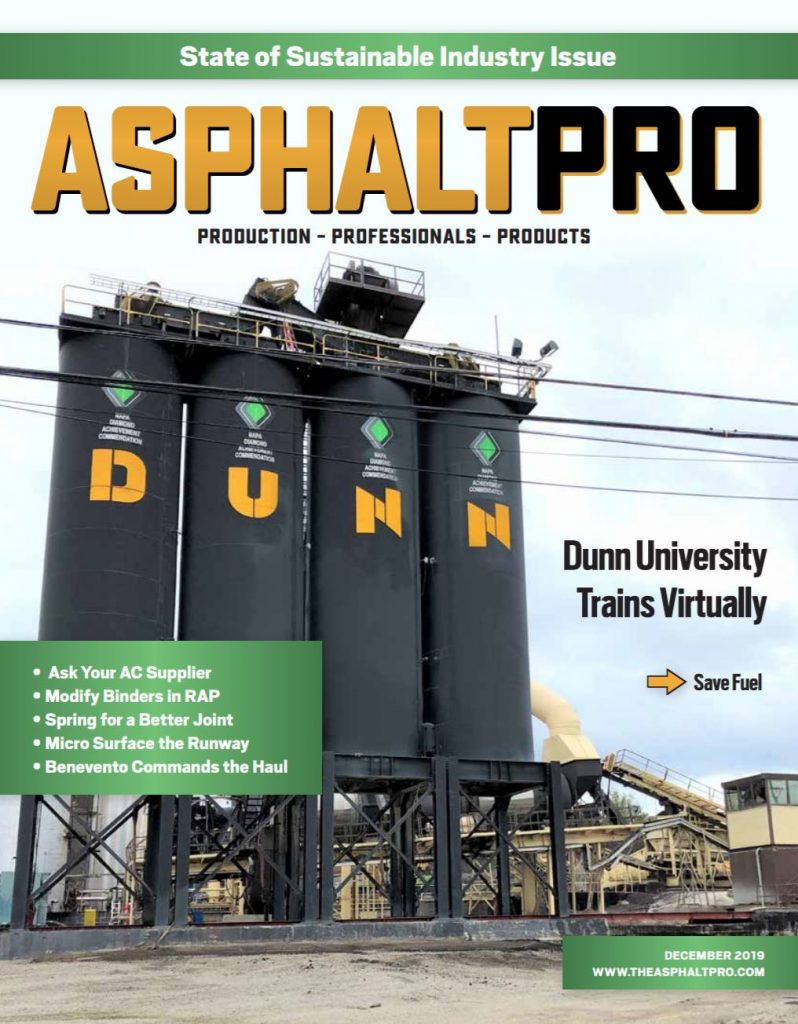
My first two forays into the world of lithium-ion (Li-ion) battery power to operate lawn equipment have been disappointing. Now that I’ve researched rumors about Li-ion battery production’s effect on our planet and what happens to the humans who mine the cobalt, nickel, manganese, etc. that goes into their manufacture, I’m ashamed of adding to the frenzy for electric and hybrid equipment.
As members of the asphalt road-building industry, we all want to enhance the already environmentally friendly ways we do business. We’re putting higher percentages of reclaimed asphalt pavement and recycled asphalt shingles into pavement mixes with elements that encourage performance properties to last an increasing number of years. We’re crushing up PCA surfaces to replace them with long-lasting, flexible, hot-mix asphalt and warm-mix asphalt pavements, both of which boast minimal carbon footprints from cradle-to-gate, according to research performed for the 6th Eurasphalt & Eurobitume Congress held in Prague. This commitment to sustainability is one reason why we, as an industry, collectively sat up and took notice of battery-operated vehicles and the concept of “electric” equipment around job sites.
Let’s face it; the battery-powered, remote-controlled compactor on display at the latest equipment show is a seductive piece of machinery. Everybody wants her. But what did the battery cost in terms of carbon footprint and child labor to mine and manufacture? Writing for Chemical and Engineering News’ July issue, Mitch Jacoby reported in his article titled “It’s time to get serious about recycling lithium-ion batteries,” that “mining for some battery metals requires processing metal-sulfide ore, which is energy intensive and emits SOx that can lead to acid rain.”
The cathode metals used in manufacturing Li-ion batteries are cobalt and nickel. Those metals are among those mined in the Democratic Republic of the Congo, where “informal” mining operations are popular. I encourage readers to do their own research on the labor practices there.
If we look past the manufacture of these batteries to the cost at the end of their lives, we see that recycling is not an easy answer yet. Recycling the batteries not only keeps them from leaching their solvents into groundwater when they pack a punch on landfill space, it offers a bite into the initial carbon footprint. The cradle-to-grave carbon footprint of the Li-ion battery can be reduced, obviously, when the battery is recycled efficiently. At this time, efficiency is lacking, but, as Jacoby pointed out in his C&EN article, post-graduate studies are now training students in battery recycling. Scientists are taking the early lack of Li-ion battery recycling know-how seriously.
Sadly, the cost of cobalt has dropped from about US$90,000 a metric tonne in mid-2018 to about US$30,000 a metric tonne in mid-2019, according to InvestmentMine, which takes the smelting process involved in recycling battery components down a less profitable path than merely making new batteries with virgin materials. (As of press time, infomine.com reported the price of cobalt at US$35,499.94 per tonne.) Hopefully, the same environmentalists who prefer Li-ion batteries to traditional power sources will forego the large profit to find a way to keep millions of tons of batteries out of landfills as the trend toward electric-powered vehicles and equipment continues.
Right now, I’m ashamed of the four Li-ion batteries in my garage to semi-power lawn equipment because I thought I was saving energy and money on gas and oil for a trimmer and lawn mower. I’m ashamed that I didn’t do more research ahead of the purchases. I’m ashamed that I contributed to the slave labor market in another country. This is my own cross to bear, but I won’t sit quietly while I bear it. I want to make others aware that we haven’t found some kind of panacea in Li-ion batteries over the internal combustion engine. Don’t be fooled by “environmentalist-speak” when it comes to these packets of power. Do your own research and make your own decisions regarding the use of battery-operated equipment.
Stay Safe,
Sandy Lender
